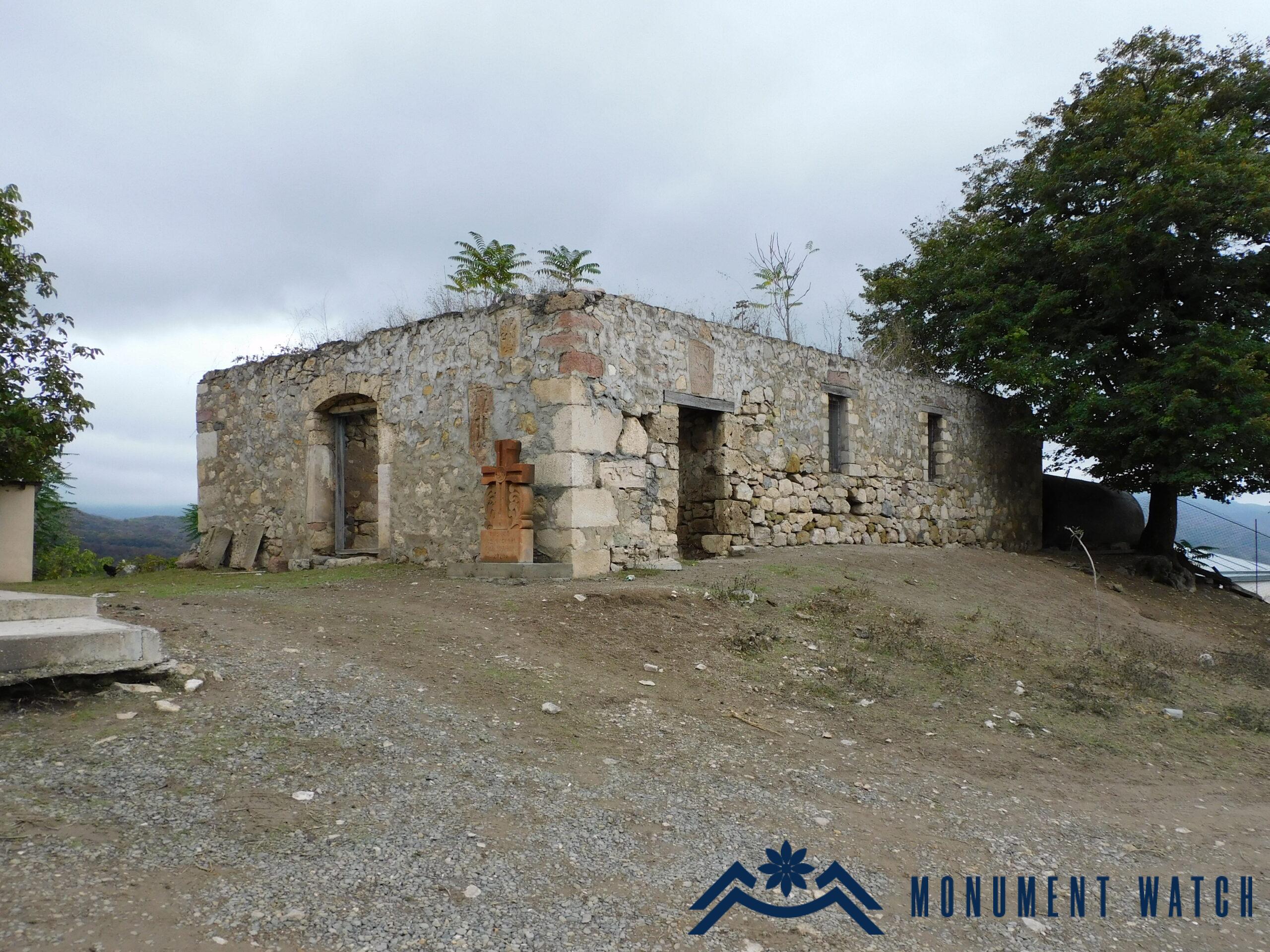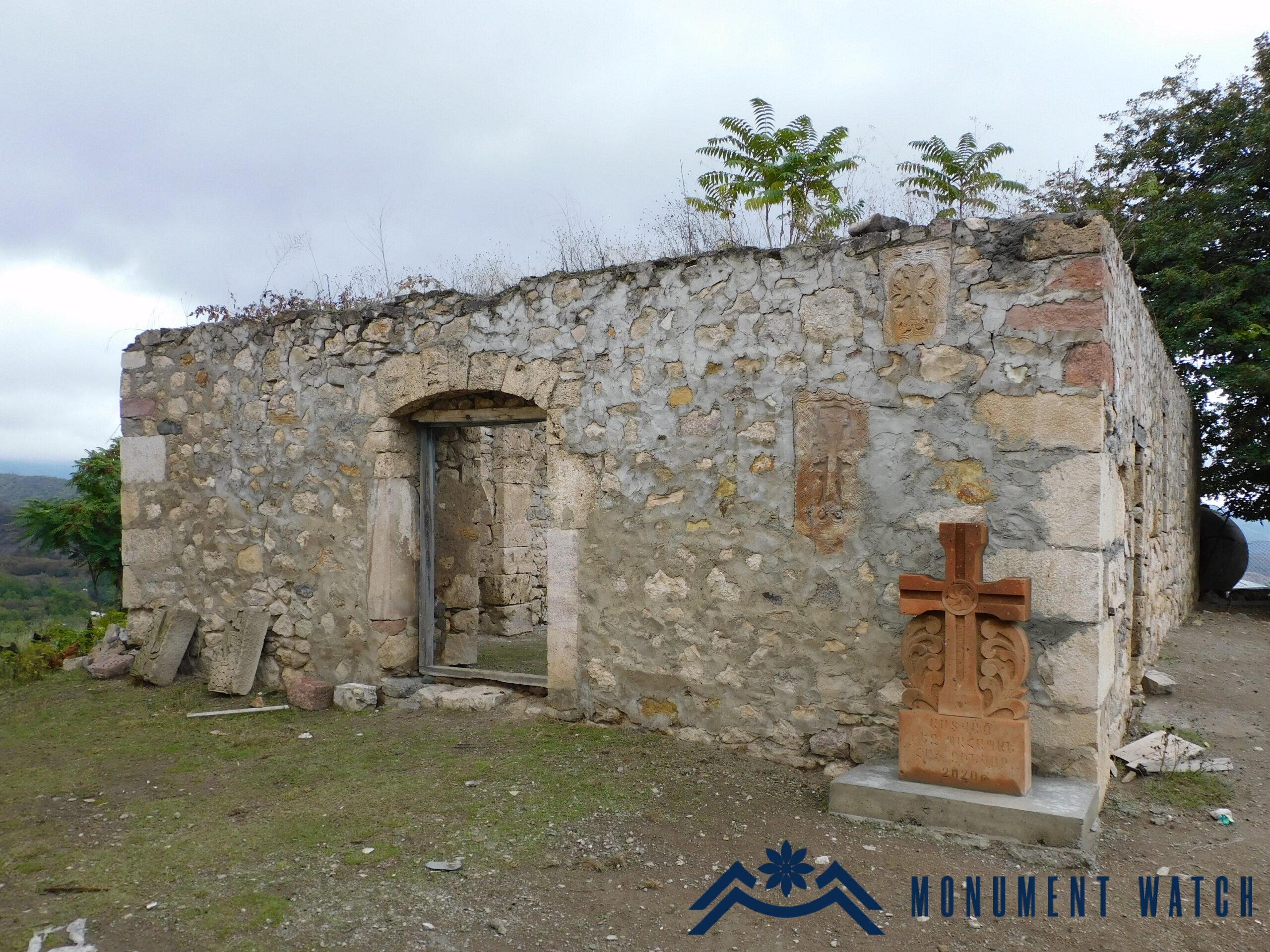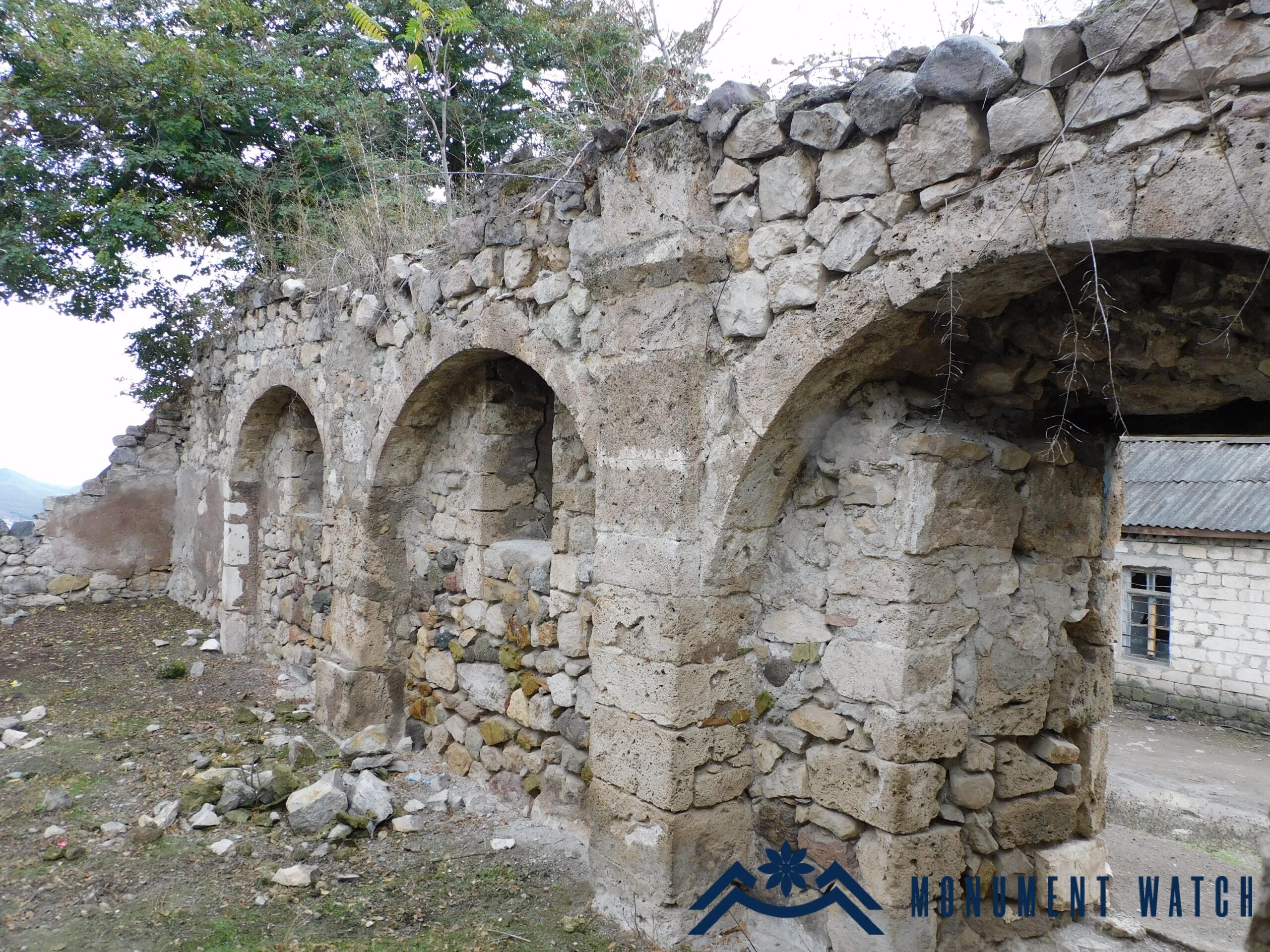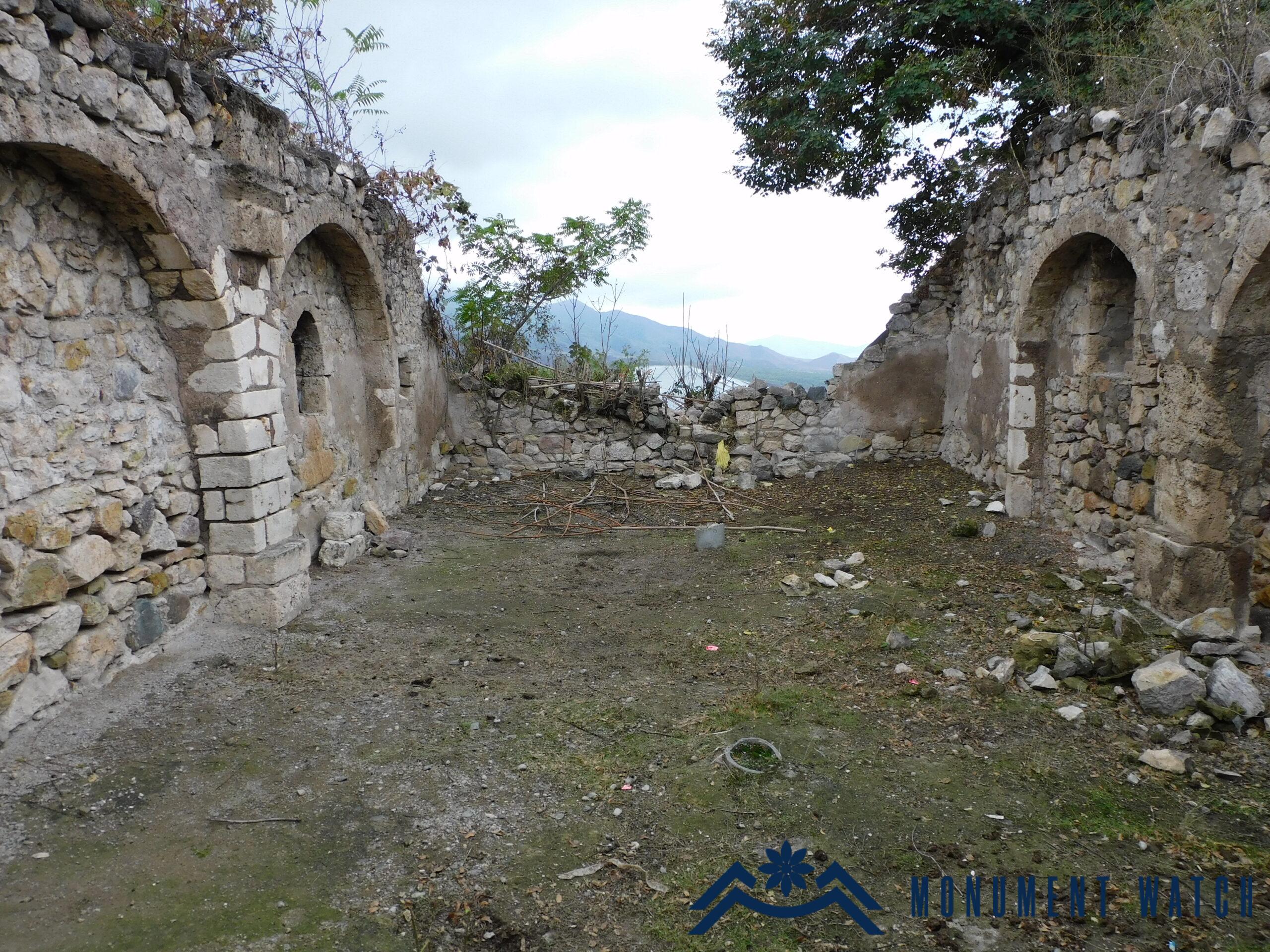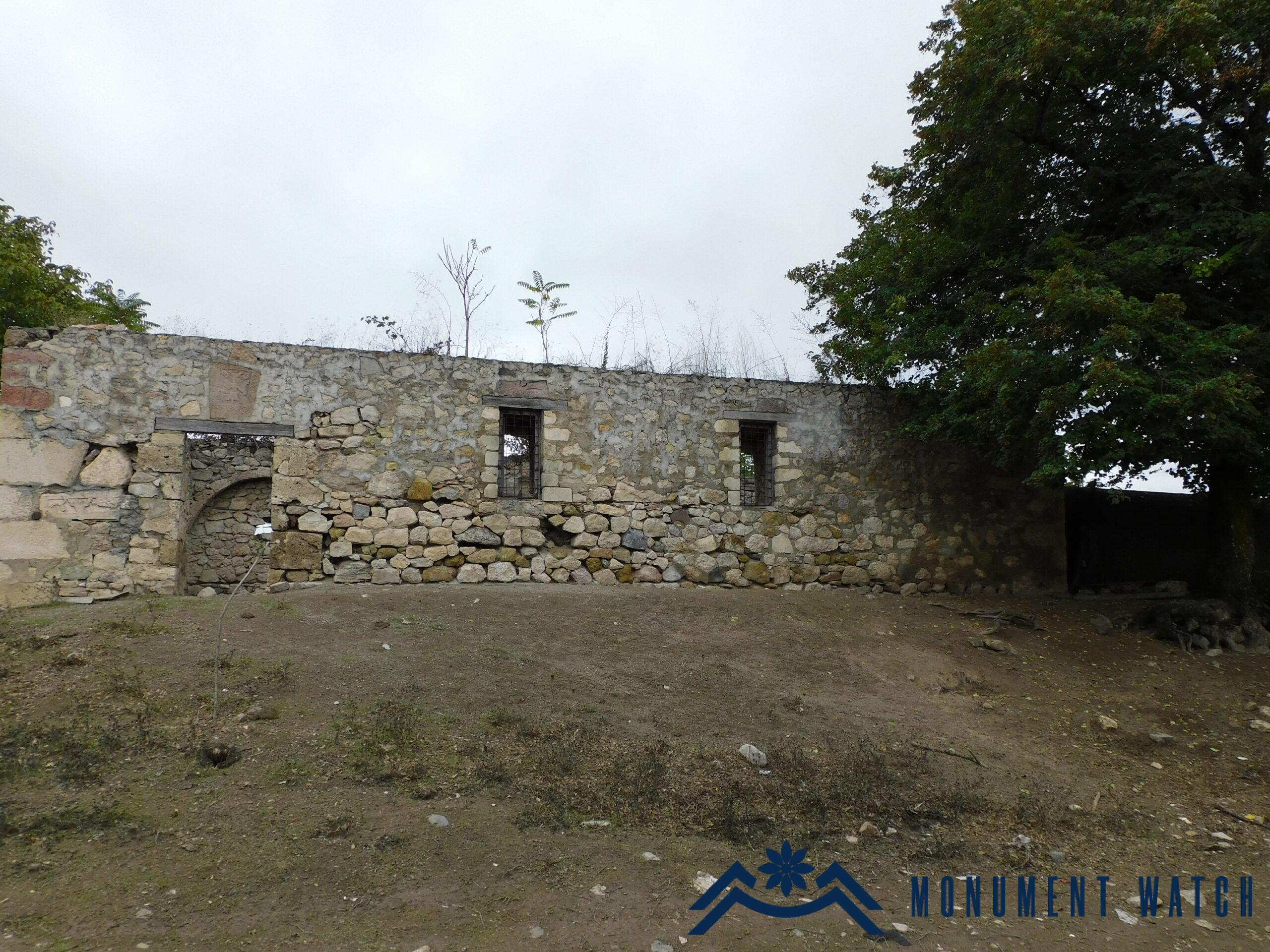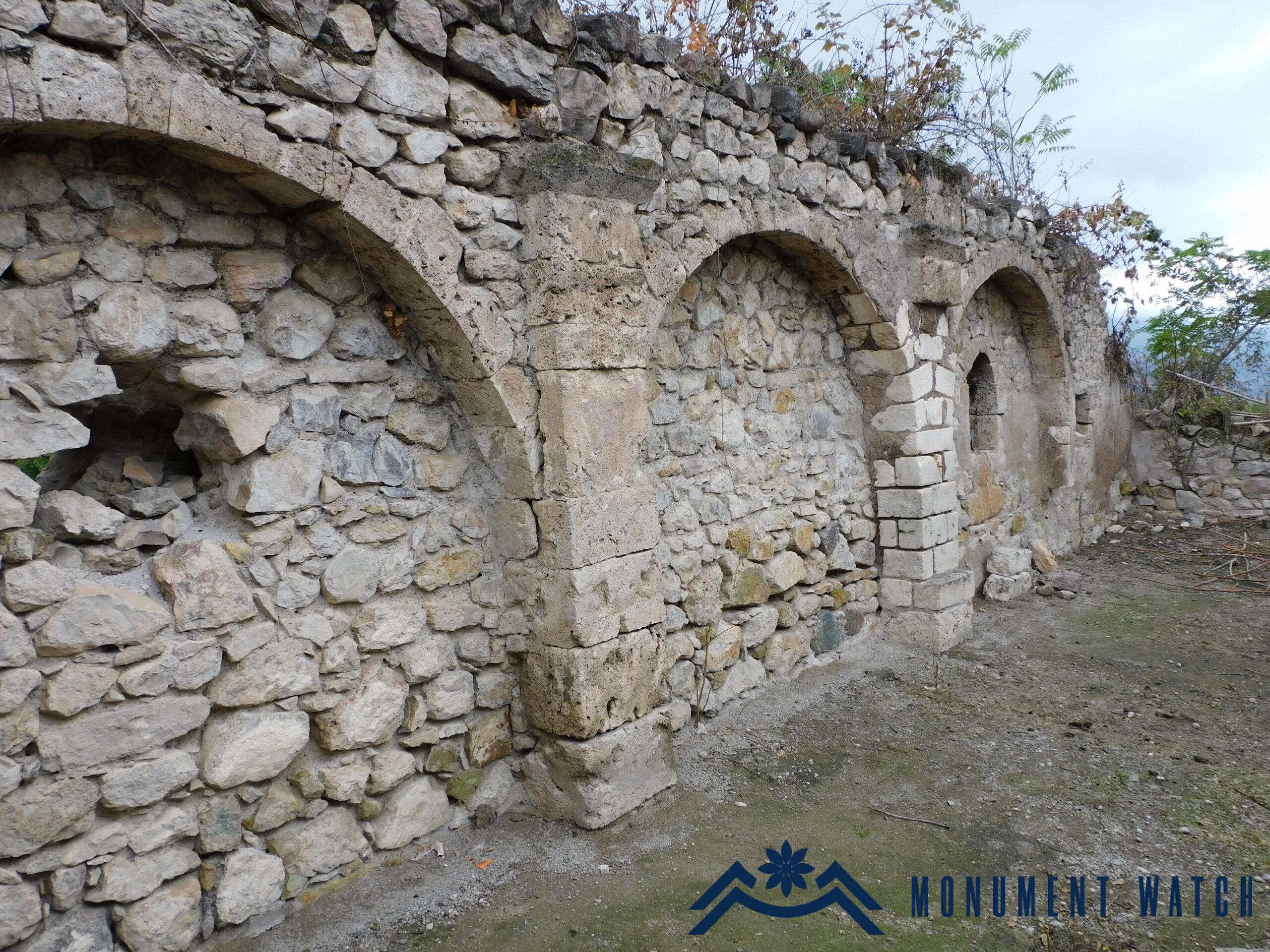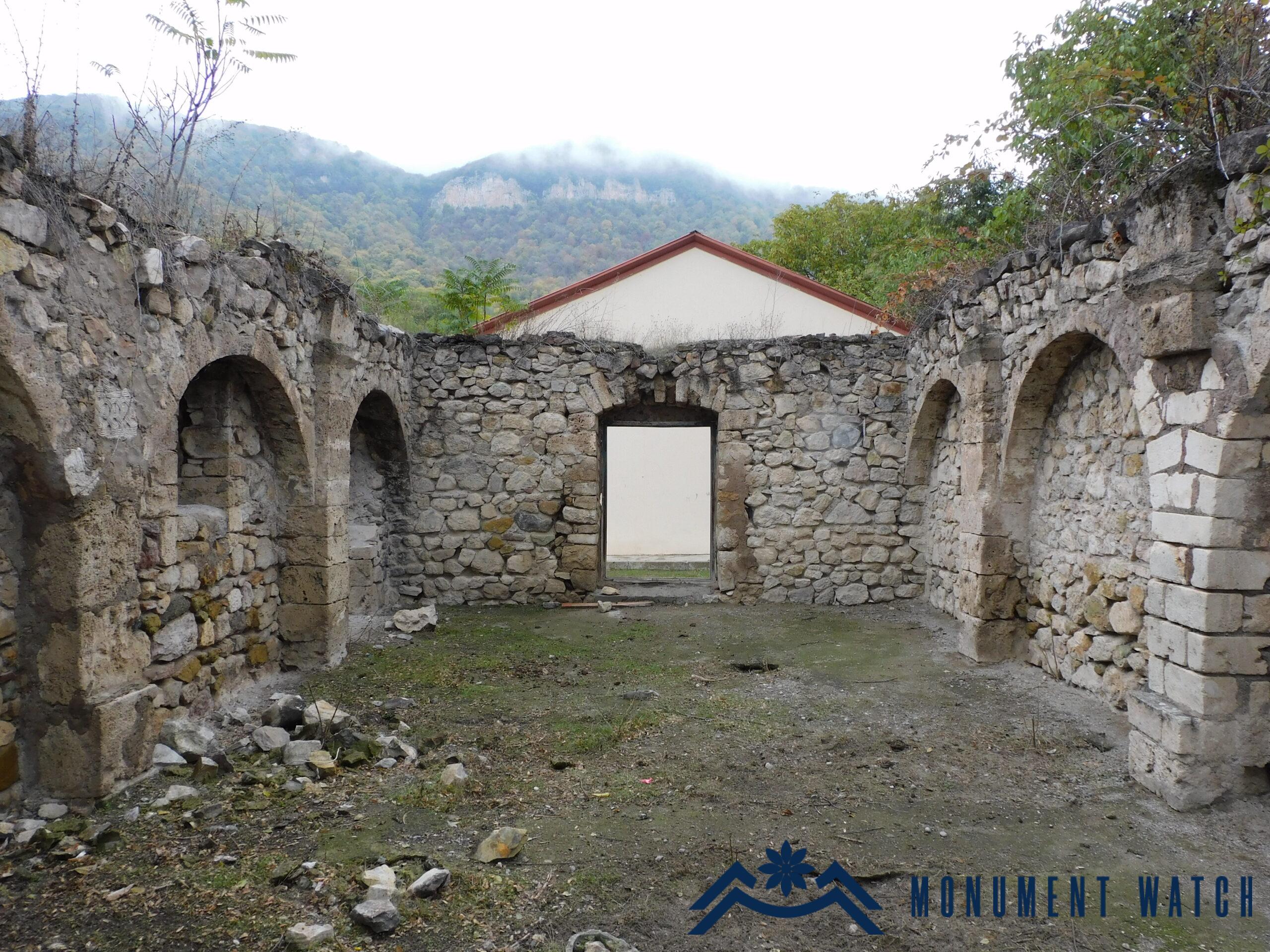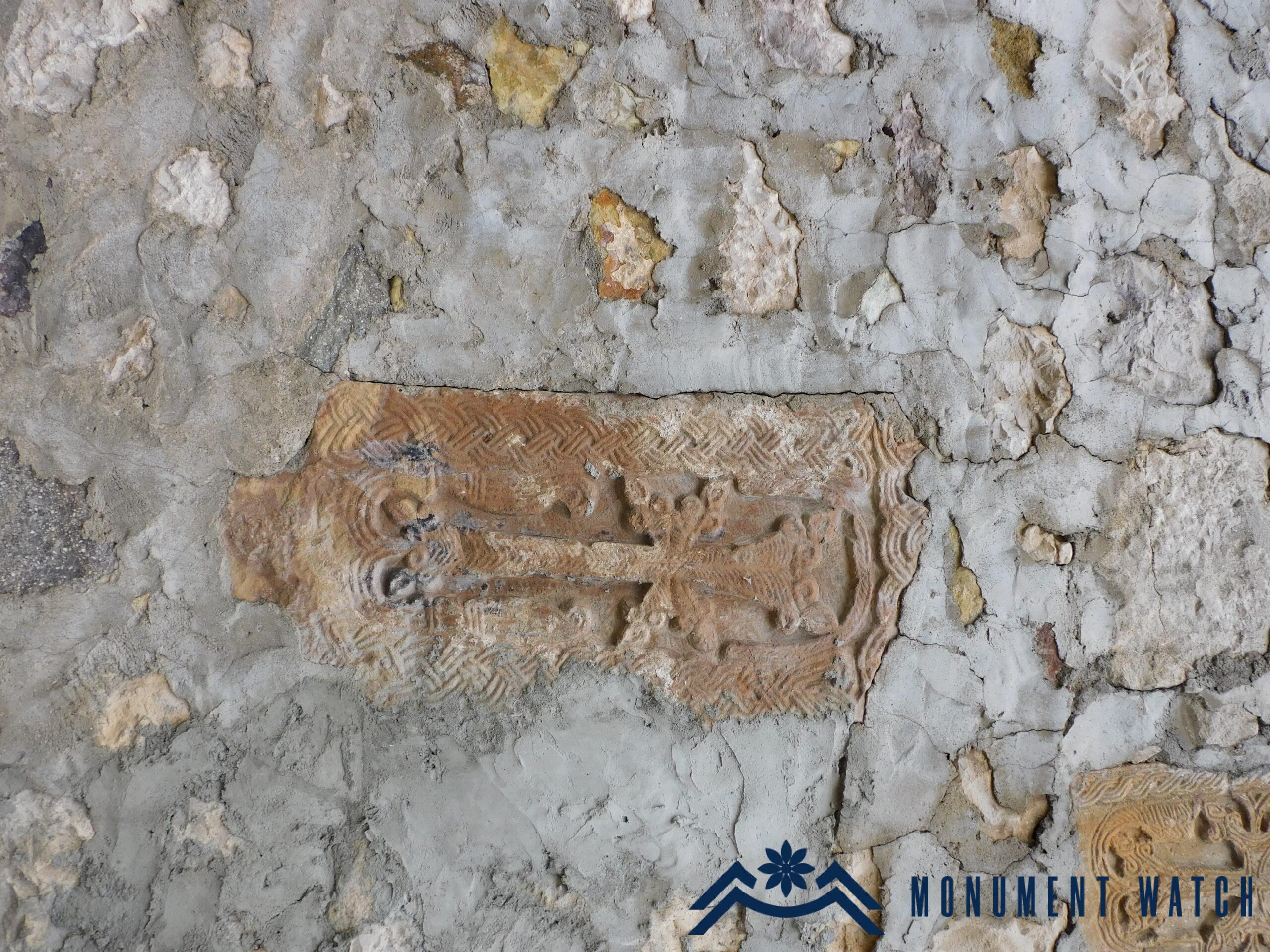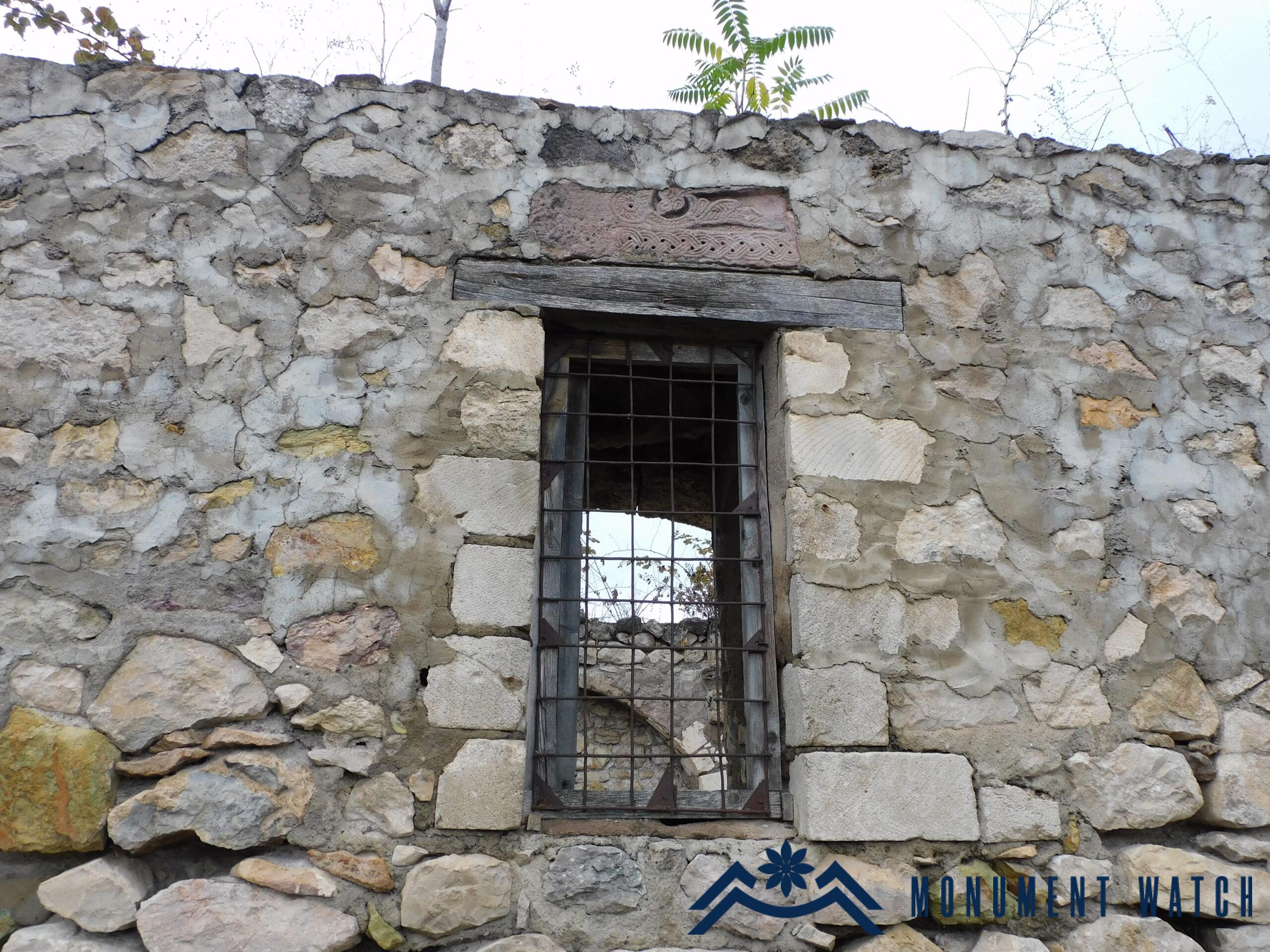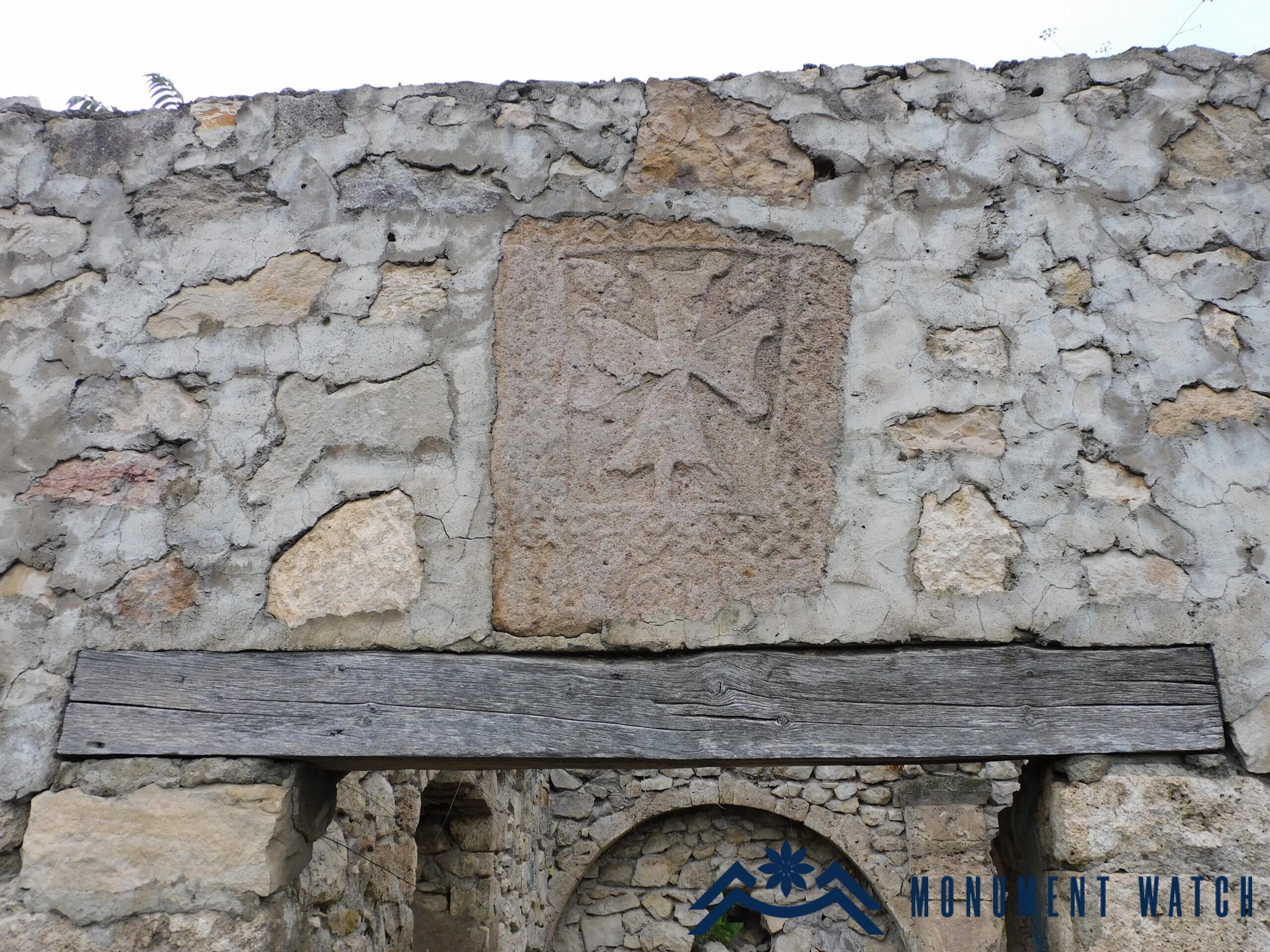The Surb Astvatsatsin church of Kichan
Location
The church is situated in the southeastern section of Kichan village, within the Martakert region of the Republic of Artsakh, atop a small hill (Fig. 1). It fell under Azerbaijani military occupation in September 2023.
Historical overview
The church was constructed in 1873(Balayan 2020, 301).
The earliest reference to it is discovered in the writings of Makar Barkhutareants, where he mentions that the priest hails from Arajadzor (Barkhutareants 1895, 167). No further information regarding the church's construction is available.
Architectural-compositional examination
The church is a small single-nave hall, constructed using rough limestone and lime mortar. Cornerstones and window frames are polished. The church boasts dimensions of 14 meters in length and 8 meters in width (Figs. 2 and 3). The vaulted ceiling, which is no longer extant, was upheld by arches positioned near the walls (Figs. 4, 5). The church had two entrances, one from the west and another from the south. The eastern tabernacle, as suggested by the remaining structural elements, possessed a rectangular shape. Positioned next to the tabernacle, the baptismal font is still intact in the northern wall, and there is also a rectangular niche in the northern wall of the main structure. The overall design and the described features indicate that it conforms to the prevailing architectural style of single-nave halls with gable roofs that were commonly found in Artsakh, Syunik, and various other regions of Armenia during the later medieval period (Figs. 6, 7).
The church wall incorporates khachkars and sculptured fragments dating from the 12th-13th centuries. In the vicinity, khachkars originating from various periods have been gathered, and beneath the wall, a khachkar commemorating the fallen heroes of the Artsakh Liberation War was built in 2020 (Figs. 8-12).
The condition before, during, and after the war
The monument is standing, although its cover is missing. It remained unharmed during the 44-day Artsakh war.
Bibliographical examination
Given its relatively new construction, historical sources provide no information about the church. It is solely referenced in the work of Makar Barkhutareants (Barkhutareants, 1895, 167).
Bibliography
- Balayan 2020 - Balayan V., Outlines of the History of Settlements of the Republic of Artsakh, Yerevan, “Zangak” Publishing house”.
- Barkhutareants 1895 - Barkhutareants M., Artsakh, Baku, Aror.
The Surb Astvatsatsin church of Kichan
Artsakh

